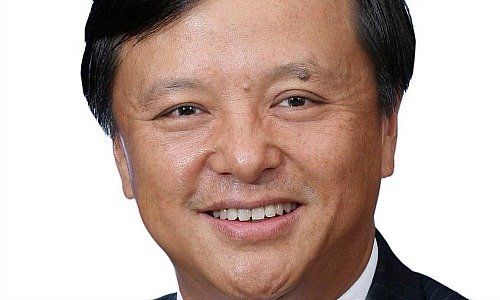Shenzhen Connect was announced last week, as finews.asia also reported. This initiative will give investors on both sides of the boundary more choices and enhanced access to each others’ markets. HKEX Chief Executive Charles Li answers some questions.
For the Hong Kong Exchange and Clearing (HKEX) Shenzhen Connect marks the completion of the mutual market access plans for China’s secondary equity market. The vast majority of A shares traded in the Mainland are now directly available via Stock Connect to global and Hong Kong investors without the need to apply for a quota.
The inclusion of 200 ChiNext stocks also gives international investors access to a new universe of technology companies, opening up even more investment possibilities. The abolishment of the aggregate quota and expansion of access, which will include ETFs sometime in the future, proves Stock Connect is scalable and flexible.
Charles Li, HKEX's Chief executive, took some questions at the news conference last week, as he figured it would be a good idea to publish answers to these below.
What are the highlights of Shenzhen Connect? Why is it significant?
Shenzhen Connect provides more access, more flexibility, more products, and more opportunities. It gives international and Hong Kong investors access to more A share stocks and more sectors, such as technology and healthcare companies listed on the Shenzhen Exchange and ChiNext. With 880 new stocks included as part of the link, most companies traded in Mainland China can now be accessed directly by foreign investors for the first time.
We also abolished the aggregate quota, which took effect at the time of the announcement last week. That means international investors can feel more comfortable investing in China and Mainland investors have more freedom and flexibility to invest in Hong Kong without fears of bumping up against a quota.
«Finally, we announced there are plans to include ETFs in Stock Connect»
Mainland investors now have more choice too, with 100 small cap stocks listed in Hong Kong now eligible for Shenzhen Connect. This, combined with Shenzhen Exchange’s marketing and investor education efforts, will likely bring new energy to Hong Kong over time.
Finally, we announced there are plans to include ETFs in Stock Connect. We said from the beginning that Stock Connect was scalable and new products and asset classes could be added over time, and we plan to continue monitoring its development and looking for ways to make it better.
Why was the aggregate quota abolished but the daily quota was maintained?
Removing the aggregate quota should give institutional investors more confidence that the A share market is open for investment on a large scale.
«It is just one extra safeguard in case there is an extreme flow of funds in either direction»
The daily quota, though, will remain in place for risk management considerations but it has effectively doubled. That's because the RMB10.5 billion quota currently in place for Shanghai Connect has been replicated for Shenzhen. That means Mainland investors have a total RMB21 billion quota to invest in Hong Kong stocks.
In fact, our experience with Shanghai Connect shows the RMB10.5 billion daily quota was only completely filled a couple of times in the nearly two years since it started. Investors should therefore not be too concerned about the daily quota. It is just one extra safeguard in case there is an extreme flow of funds in either direction.
Why is investor participation in ChiNext stocks restricted?
We’ve taken a prudent approach to Stock Connect all along to ensure that it succeeds as a stable, successful programme.
The ChiNext board is a start-up board in Shenzhen with a number of small cap companies that is high risk and high volatility, so we will initially provide access cautiously. In fact, even the Mainland has restrictions in place vis-à-vis ChiNext. For example, Mainland investors who want to participate on ChiNext must sign a risk disclosure statement.
In time, it's possible the Hong Kong securities regulator could introduce something similar here. But for now, retail investors who are interested in ChiNext stocks can trade them via institutions in Hong Kong, which creates new business opportunities for market practitioners in the city.
«The result is a pricing gap that will probably be sustained in the short term»
But like everything else in the mutual market access programme that is designed to be manageable, sustainable and scalable, I expect this to evolve over time. Regulators will keep a close eye on how the scheme functions and individual investors may be allowed to trade ChiNext shares eventually, subject to the resolution of related legal and regulatory issues.
Do you think the launch of Shenzhen Connect will help narrow the gap between A and H shares?
There was speculation the gap would narrow with the launch of Shanghai Connect, but that didn’t happen. That’s because the investor makeup and sentiment in both markets are fundamentally different. The Mainland market is mostly made up of retail investors who can be fickle, while Hong Kong is dominated by institutional and value investors.
The result is a pricing gap that will probably be sustained in the short term, while long term the pricing will likely converge as stocks become fungible and investors have more options.
I do think Shenzhen Connect is another step towards the internationalisation of the Mainland’s A share market, however, and it’s only a matter of time before A shares are included in major global indices.
Some investors have said the Shenzhen market is already expensive. Do you think there is much international investor appetite for stocks listed there?
I’ve read some commentary mentioning the high multiples, volatility, and low correlation with the world’s major markets as a concern. Whether there is merit in these arguments is for investors to decide. As bridge builders, our job is to provide more access and more choices for investors to diversify their investments to the greatest extent possible.
«Mutual market access will have a far reaching impact on both markets»
The stocks listed in Shenzhen represent much of China’s new economy and the country’s future, so I anticipate interest from foreign investors in terms of diversifying their portfolios and having exposure to high-growth sectors.
How do you see the market reaction to the launch announcement?
As I said at the start of Shanghai Connect, this is a long term market facility that can't be judged in one day or even one year. Short term market fluctuations are based on the sentiment of the day, but increasing access to the Mainland market is something that will be sustained and enhanced over the long term. Mutual market access will have a far reaching impact on both markets.
What is the next step? What new Connect schemes are in the pipeline?
We said at the very beginning of Shanghai Connect that the programme could be expanded over time, and the decision to include ETFs is a great example.
«Many Investors will have more opportunities and more choices»
We’re going to need some time to work out some differences in the two markets, such as trading and settlement arrangements over different holiday schedules as well as the short selling mechanism. The exchanges and clearing houses on both sides are working towards the goal to provide investors with greater market availability and convenience. We hope we’ll have some updates soon.
There are a number of ways we can provide greater cross-boundary access for both Mainland and international investors, and we will continue looking at ways to broaden Stock Connect, include new asset classes, and build more bridges so investors will have more opportunities and more choices.



















